Ancient Symbols in the New World, Part III
Editor's Note: Our guest writer Byron Augustin is a retired university professor who lives in Valladolid. Every once in awhile, he indulges his interest in local history and investigates and writes about something that has caught his eye. This is Part III of a fascinating article about a symbol that he started seeing on his trips around Yucatan. He started investigating its origin, and this three-part series is the result of his explorations. You can read Part I here and Part II here.
*****
Let Us Summarize
In Part I of this series, we embarked on a mission to discover what the ancient symbols encountered at three different Yucatán sites represented. After nearly a year of surfing the Internet, bugging friends, and checking out libraries, an art professor at the University of North Carolina finally revealed the answer. The symbol was indeed ancient and was called a Basque lauburu.
In Part II, armed with my newly discovered information, I set out to find an explanation for where, precisely, these symbols had originated and how they arrived on the Yucatan Peninsula. This quest led to a complex revelation of the Basque/Spanish coalition in the discovery of the New World and the conquest that followed. After Spaniards, Basques were the second largest group that immigrated to the Yucatan in the 16th and 17th centuries. Some of them placed Basque lauburus on their gateposts and door lentils to identify their unity with families still in Europe. What is remarkable is the fact that some of these symbols have survived for more than three centuries! They are historical icons of the Yucatan, and every effort should be made to protect them.
In Part III, observations will be made regarding what the symbol means, where the reader can find these historical gems, and some examples of individuals with Basque ancestry that you might recognize.
A Lauburu By Any Other Name
First, however, it is important to know that the Basque lauburu is also known as the Basque 'cross', as well as the Basque swastika. Using the term 'Basque cross' frequently leads to the incorrect assumption that the symbol is associated with Christianity. It is not! When Roman soldiers arrived in the Basque region around 200 BC, the Basques were flying banners displaying the lauburu. The Basques rejected Christianity until at least the 10th century. The Arabs of Islamic Spain, who came in contact with the Basques, referred to them as pagans.
Referring to the symbol as a Basque 'swastika' is also valid. It is one of many ancient styles of swastikas designed by numerous cultures. The list includes Buddhists, Hindus, Tibetans, Japanese, Egyptians, Romans, Navajo, Maya, Aztec, Inca, Celts, Greeks, Jews, Sikhs, Basques, and many others. In fact, even the Maya god Kukulcan was frequently represented with a Maya swastika on his shield.
According to radio carbon dating, the oldest swastika is engraved on a piece of ivory that is 12,000 to 15,000 years old, and was discovered in the Ukraine. Archaeologists working in Ohio uncovered the Pre-Columbian Hopewell Green Slate Swastika that dates to 200 BC. Almost all cultures that displayed swastikas attributed them to positive feelings such as harmony, good luck, and life. The Nazis changed the reputation of the swastika as a symbol. Unfortunately, for most people, the word 'swastika' is now associated with the Nazis and death, torture, inhumanity, genocide and other negative words and deeds. What a pity that one small group used the swastika symbol to damage its beauty!
The Original Meaning of the Lauburu
Basque lauburu has a nice ring to it and the word lauburu allows you to speak at least two words in the Euskera language. Lauburu means four heads. In Euskera, lau is the word meaning four and buru means head. This is quite logical. The symbol has four, soft, curvilinear, comma-shaped heads. What does the symbol represent? It means different things to different people.
In 1968, a Basque intellectual, Imanol Mujica, presented his theory at an international conference in Bogota, Colombia. With great sincerity, he suggested that the four heads represented form, life, sensibility, and conscience. He went on to propose that these four human elements relate to four scientific elements: solid, liquid, gas, and radiant heat. Yes, of course, I am sure that more than 2,000 years ago, this is exactly what the original designer had in mind... probably not! Other theorists believe the four heads indicate the four states in which man exists, and those would be physical, mental, emotional, and perceptual. Finally, it has been postulated that the four heads might denote water, earth, air, and fire.
In my opinion, these folks have too much time on their hands. Let me toss in my theory: It was either a woman or a man, sitting in a cave on a rainy day, bored to death. He or she picked up a stick and sketched the design of the symbol in the dirt floor, and that is how the Basque lauburu was born….doodling in the dirt!
Today's Lauburu
In reality, no one knows what it means for sure. As it was created so long ago, there is no written documentation regarding the symbol’s original meaning. The first book published in Euskera was a poetry book with not one word about the Basque lauburu. In my opinion, what is important is what current Basques think the lauburu represents.
Generally, there are two possible interpretations, depending on the direction the four heads are facing. To make that determination, it is necessary to draw a vertical line through the center of the symbol. If the head faces to the right, it is a positive symbol that represents life, good luck, prosperity, protection as well as Basque pride and unity. If the heads face to the left, it is a negative form and represents death, destruction, and misfortune. Left facing heads are usually observed on grave markers and death notices.
Lauburus on the Internet
I surveyed Internet photos of Basque lauburus and found 357 different ways to display the symbol. Three hundred and ten had right facing heads, and forty-seven faced to the left. The most popular uses of the positive symbol were on jewelry, banners, graphic designs, clothing, and tattoos. Some of the more unusual were on shower curtains, a chef’s apron, poker chips, and even a knitted sweater for a dog. Unusual left facing heads were found on a weather vane and a cookie cutter. These might mean bad weather is coming or that grandma had a bad day in the kitchen. Do not eat that cookie!
Lauburus in the Yucatan
The Basque lauburus in the Yucatán were mostly found on gateposts or door lintels at historic haciendas or colonial era homes. Haciendas that have been restored as boutique hotels, like Hacienda Itzincab Cámara and Hacienda San Francisco Tzacalha, both display excellent examples of historic preservation of the symbols. Twenty-two of the symbols were right facing (positive) and twenty-two were left facing (negative). There is no logical explanation for the high percentage of negative symbols on objects that call for a positive symbol. Perhaps at that point the lauburus had become strictly a design element and their more subtle meanings were unknown or unheeded.
There were some lauburu displays in the Yucatán that did not follow the normal patterns found in the Basque Country. At Hacienda Itzincab Cámara, three lauburus rotated to the right and one rotated to the left. Hacienda San Francisco Tzacalha displayed several examples where two heads of the lauburu were present instead of four heads. In all of the research, I only found one ancient example of the use of two heads and that was on an old cemetery marker.
The gateposts at Hacienda Uxmal have lauburu rotating to the right on one side and lauburu rotating to the left on the other side. The most unusual lauburus were located in the interior of the colonial house of Carlos Peón Machado in Mérida. All four heads were present on pieces of decorative sheet metal, but did not follow a right or left rotation. (see photo). In Valladolid, the Sisters of the Blessed Sacrament operated a parochial school from 1919-2015 in a colonial building with the pagan Basque lauburu above three windows.
The following list describes where you can observe the symbols, with the distance from Mérida to the actual sites.
- Mérida Central Mérida: Central Bus Station, Calle 69 x 68 y 70
- Mérida Central Mérida: House of Carlos Peón Machado
- Kanasin: 6.4 kilometers, Hacienda Mulchechen
- Sotuta: 23.5 kilometers, Hacienda Itzincab Cámara
- Tixkokob: 24.6 kilometers, Ultrasonido Diagnostico Clinic, near central Tixkokob
- Yaxcopoil: 36.6 kilometers, Hacienda Yaxcopoil, between Uman and Muna
- Cansahacab: 63.3 kilometers, Arco de Santa Barbara
- Cansahacab: 63.3 kilometers, Hacienda Bache –Ceh
- Dzidzantun: 76.2 kilometers, Hacienda San Francisco Teacalha
- Uxmal: 83. 4 kilometers, Hacienda Uxmal (Don Simon Peón)
- Uxmal: 83.4 kilometers, The Chocolate Museum
- Uxmal: 83.4 kilometers, Hacienda Uxmal Hotel
- Cenotillo: 115.2 kilometers, Hacienda Santa Maria
- Valladolid: 158.7 kilometers, Colonial house, Calle 42 x 37 y 39
A Personal Basque Encounter
A conservative estimate of the current number of people living in Latin America with Basque ancestry is 25,000,000, with Mexico's population adding two and one-half million. How many readers can truthfully say that they have known a Mexican Basque or any Basque for that matter? I have only known one such person for sure, and he was the manager of the Hotel Rocamar on Isla Mujeres for many years. I housed my study abroad students at the Rocamar for almost three decades and had the opportunity to learn quite a bit about the owner, Ino Cueva.
Ino Cueva was pure Basque and he left the Basque Country when he was nineteen. His exodus was part of a Basque diaspora resulting from the policies of Spain’s dictator, General Francisco Franco. Franco’s inhuman treatment of the Basques included a 1937 invitation from Franco to the German Luftwaffe and Italian Air Force to complete a practice-bombing run over the Basque market city of Guernica. Hundreds of innocent people, including women and children, were killed and the city was razed. Pablo Picasso painted a gigantic mural measuring eleven feet by twenty-six and one-half feet depicting the horror of the event.
In the evenings, Ino would bring out a bottle of 21 year-old Glenfiddich Scotch Whiskey and reminisce with me about life under Franco. His story began late one evening, when he returned to the sprawling three-story stone structure that housed three generations of Cuevas, one on each floor. Entering the first floor, he witnessed one of Franco’s soldiers beating his grandmother. He moved quickly and silently to the third floor and retrieved his pistol. When he returned to the first floor, he demanded that the soldier leave. The soldier reached for his pistol, and Ino shot and killed him instantly. Self-defense and a fair trial for a Basque were out of the question in Franco’s Spain. Relatives smuggled him across the Pyrenees to safety in France and eventually to Mérida, where he had an uncle who was a successful businessman and real estate investor. In 2005, the Statue of Limitations for the charge of murder expired and Ino returned to the Basque Country where he spent his remaining years.
During the process of researching Basque lauburus, I ran across hundreds of names that I had never associated with Basque ancestry. I am curious as to whether our readers are aware of the fact that the following individuals are native Basques or descendants of Basques.
Iñigo Lopez de Oñaz y Loyola
Most readers are likely familiar with the name Saint Ignatius of Loyola. Saint Ignatius was originally a Basque nobleman from Guipúzcoa who served in the military. Unable to outrun a French cannonball in a battle at Pamplona, he suffered catastrophic injuries to his right leg and additional damage to his left leg. A lengthy and painful recovery gave him time to read religious literature.
This led to a personal change in his life and he became a devout Catholic and founded the Society of Jesus, more commonly known as the Jesuits. Pope Paul III approved the all-male order in 1540, just in time for the Jesuits to take advantage of clerical opportunities in the New World. The Jesuits work with indigenous populations in some of the most remote regions of Latin America is legendary. Saint Ignatius was canonized March 12, 1622.
Juan de Zumárraga
Zumárraga was born in the Basque province of Vizcaya and joined the Franciscan order at a young age. He was a dedicated priest and promoted to higher positions quickly. Eventually, he was appointed as the first bishop and later the first archbishop of Mexico. He was known for his attempts to protect the Indians. He also founded schools, built hospitals, and brought the first printing press to Mexico.
Juana de Asbai
Juana de Asbai lived in central Mexico in the last half of the 17th century. Asbai’s father was a landowner and past ship captain, like many Basques who settled in Mexico. Juana was a brilliant child who could read at three years of age and joined a convent in 1667. She went on to become one of Mexico’s most distinguished intellectuals. If you say you have never met a Basque, take out your wallet or purse and remove a 200 peso note. Let me introduce you to Juana de Asbai, known in these parts as Sor Juana.
Martin de Urzúa y Arizmendi
Martin de Urzúa y Arizmendi was also known as the Count of Lizárraga and was part of the group of Basque conquistadors who flooded into Mexico in the 1600s. Urzúa served as governor of Yucatan from 1694 to 1708. He is especially noted for leading an expeditionary force to Guatemala, which resulted in the defeat of the last Maya stronghold of Nojpetén. After his tenure as governor of Yucatan, he was appointed president of the Philippines by the Spanish monarchy.
Lorenzo de Zavala
Lorenzo de Zavala was born to Basque parents in Tecoh, Yucatán, near two sites where we discovered Basque lauburus. He was well educated and fluent in Spanish, French, English, and Latin. He was a senator from Yucatan for the first Constitutional Congress and later was governor of the state of Mexico. He is a much beloved historical personality in Texas where he was a significant contributor in the writing of the constitution of the Republic of Texas, which he signed. Recognition of his political skills led to his appointment as the first vice president of the Republic of Texas.
Fermin Antonio Mundaca y Marecheaga
Mundaca was born in Bermeo, Vizcaya in the Basque Country. His career is on the shady side, but he is reported by several sources to have been a pirate and slave trader before settling on Isla Mujeres where he eventually established a large hacienda. Hacienda Mundaca (Vista Allegre) at one time covered forty percent of the island. He fell in love with a beautiful woman half his age and built beautiful buildings, arches, and gardens on his land in an attempt to win her affection. Apparently, she found his interest in her disgusting, and rejected his unwanted advances. Mundaca became a recluse and withdrew from social interaction. You can still visit his estate, Hacienda Mundaca, and his empty tomb in the Isla Mujeres municipal cemetery. It is worth a peek because of the skull and crossbones, which he is said to have carved by hand. There are also engraved phrases on each side of the tomb that will catch your attention. The phrases read, “What you are, I was,” and “What I am, you will be.”
Francisco Goya
Goya is widely recognized in the art world as the greatest painter of his time in Spain and perhaps the most powerful and original figure in the visual arts in Europe. As a testimony to his skill and productivity, Spain’s finest art museum, El Museo del Prado in Madrid has 140 Goya paintings. His father was Basque and he was proud of his Basque heritage. In his painting, Portrait of the Marchioness of Santa Cruz, he painted her holding a lyre with a Basque lauburu visible under her left elbow.
José Doreteo Arango Arámbula
Arango’s ancestry is mixed, but we know he was from partially Basque descent, which he acknowledged. He was a bandit, Mexican Revolutionary general and Governor of Chihuahua. In 1916, he raided Columbus, New Mexico, which brought U.S. Army General John J. Pershing to Mexico. After chasing Arango unsuccessfully for nine months, Pershing gave up and returned to the U.S. to prepare for engagement in World War I. Did I mention that Arango’s nickname was Pancho Villa?
Eva Peron Duarte
Known more popularly as, “Evita,” Eva was born on the dusty plains of the western Pampas. Her mother was Basque and her father was Spanish. She married Juan Peron, one of Argentina’s most well known military and political figures. She used her position as “First Lady of Argentina” to aid the poor and was unusually popular with the economically disadvantaged. She was a strong, self-assured woman who participated extensively in shaping Peron’s political decisions. Don't cry for her.
Che Guevara de la Serna
Che was three-quarters Basque. He earned a medical degree. However, he became restless and rode a motorcycle from Argentina to Mexico City where he met Fidel Castro. He joined Cuba’s revolutionary forces and helped topple Fulgencio Batista’s military dictatorship. Bored with serving mundane governmental duties in Cuba, he headed to Bolivia to help foment a socialist revolution there.
He was captured with the aid of the United States CIA and executed with no trial. Today, his image is iconic and he is a worldwide symbol for socialist change.
Luis Echeverría Álvarez
Echeverría’s father was Basque. He was elected the 50th president of Mexico and served in that role from 1970-1976. Prior to his election as president, he served as Mexico’s Interior Secretary. He maintained a hard line on student protesters, which led to the Tlatelolco massacre in 1968, permanently staining his career.
Augusto Pinochet Ugarte
Pinochet’s mother was a Basque who instilled discipline and used a firm hand to shape her son’s life. He led a military coup that resulted in the death of the democratically elected leftist president of Chile, Salvador Allende. Pinochet became a ruthless military dictator accused of killing between 7,000 and 15,000 opponents.
Placido Domingo
Domingo is often referred to as “the King of Opera.” He was born in Madrid of a Spanish father. His mother, Josefa “Pepita” Embil Echaniz, was a popular Basque singer born in the Basque Country province of Guipúzcoa. The family moved to Mexico while Placido was still a young boy. He made his first professional appearance in Merida, Yucatan, at the age of 16, as the pianist for a concert his mother performed. He has since performed on stages around the world almost 4,000 times. He holds the Guinness Book of World Records for having received 101 curtain calls after his performance of Verdi’s Othello at the Vienna State Opera.
Alejandro Gonzalez Iñarritu
Iñarritu is a talented writer and movie director who was the first Mexican motion picture director to win an Oscar. In fact, he won three Oscars for his movie “Birdman,” starring Michael Keaton in 2015. He has won several Golden Globe awards and won an Oscar in 2016 for his direction of “The Revenant.” With his win as best director in 2016, he is only the third director to win back-to-back Oscars in the history of the Academy Awards.
*****
NOTE: If our readers are aware of additional sites in the Yucatan, the states of Yucatan, Campeche, and Quintana Roo, that display Basque lauburu, we encourage you to please tell us about them in the Comment section below. If possible, please list directions to the site where you discovered the lauburu and attach a photo. We will recognize your discovery in future issues of Yucatan Living. THANK YOU!




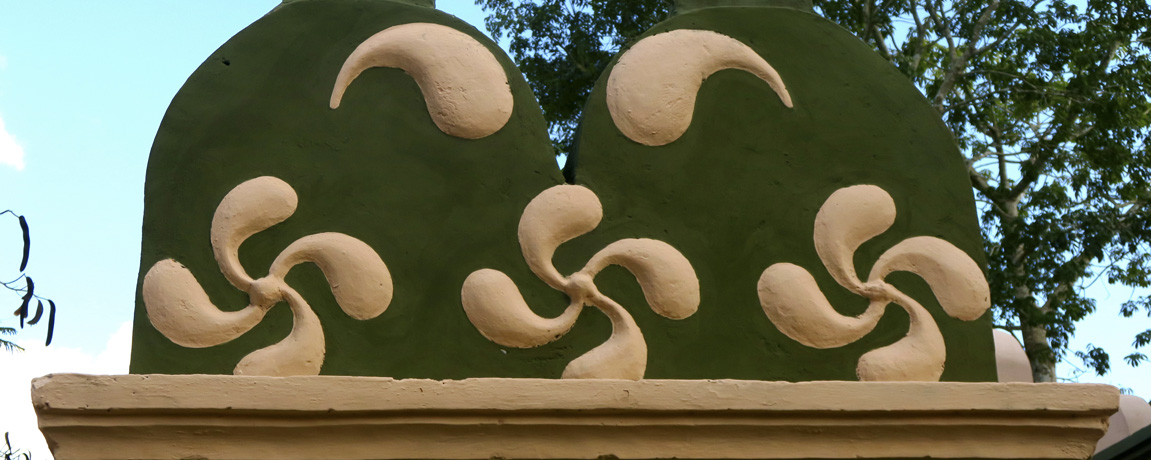

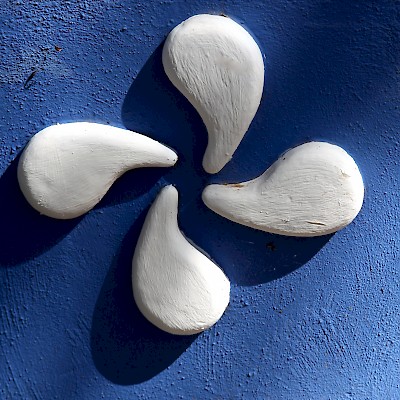
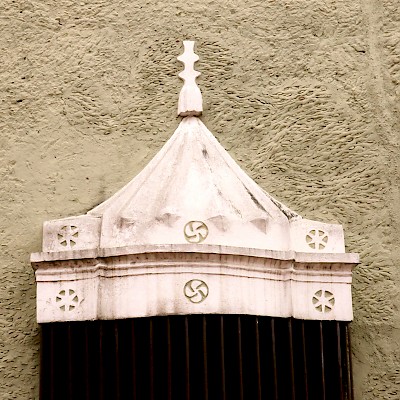

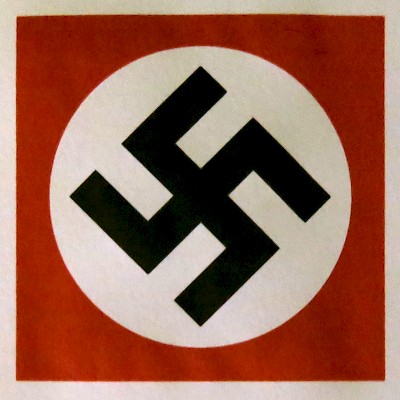

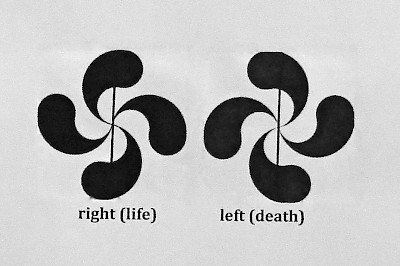
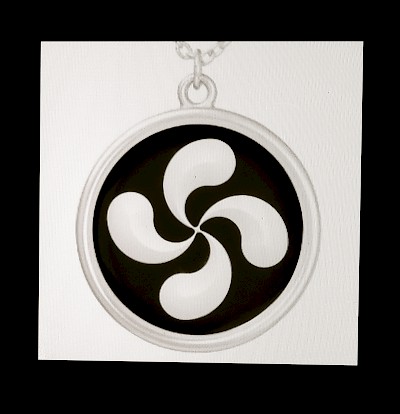
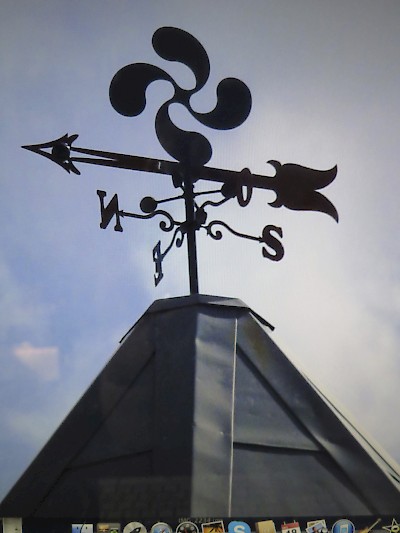
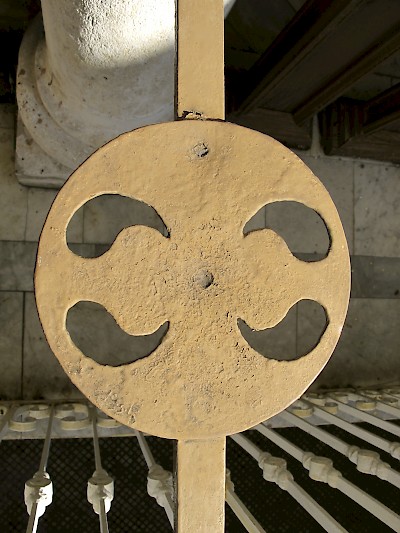
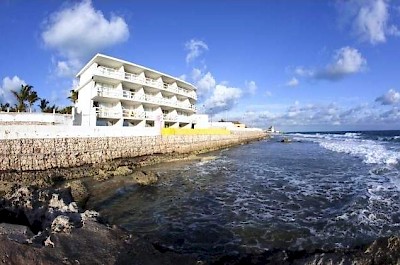
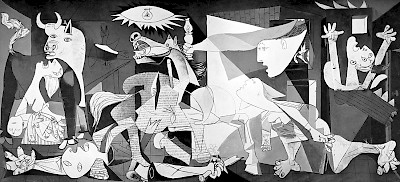

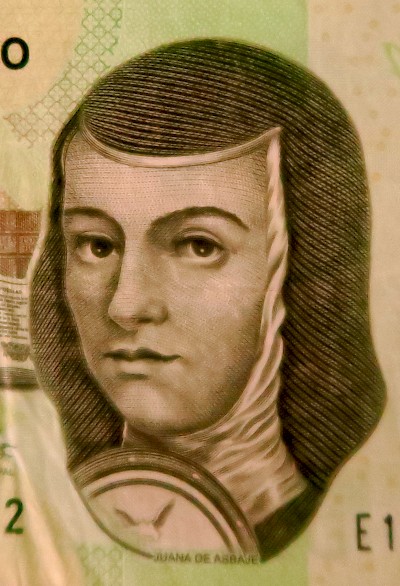
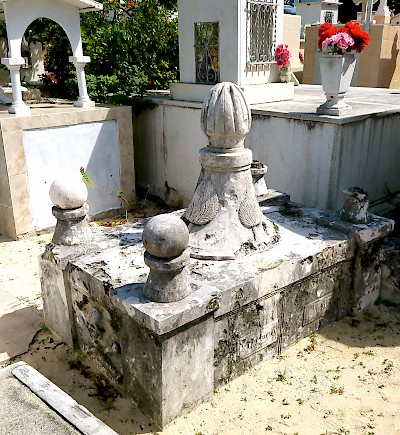
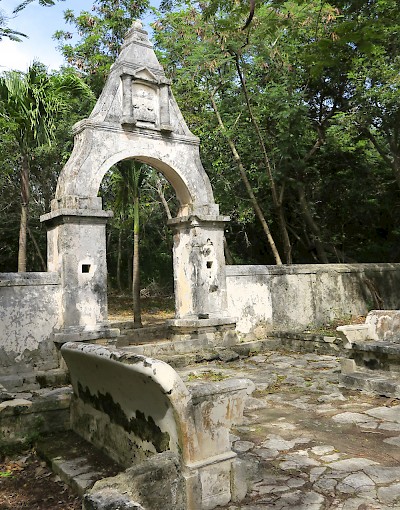
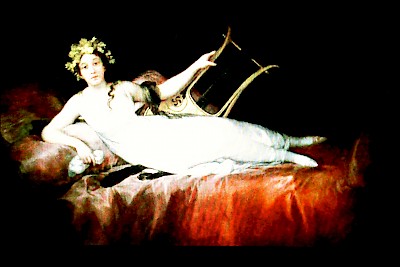
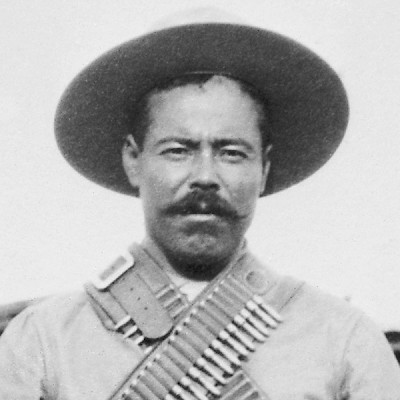
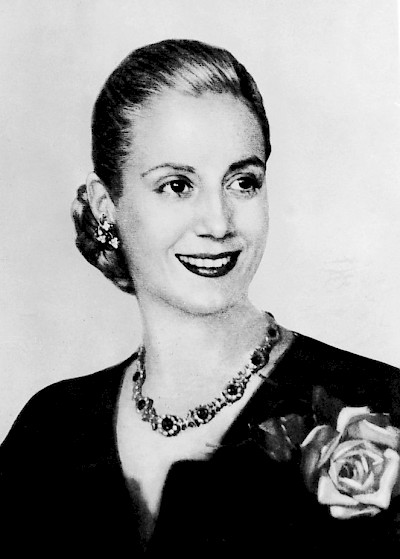
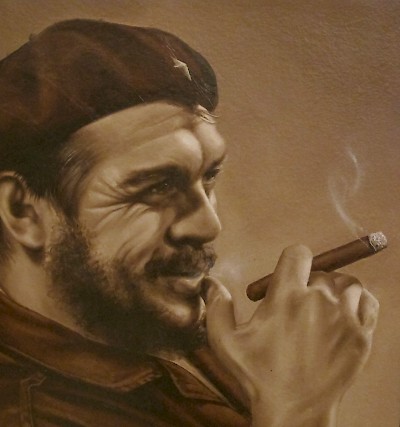
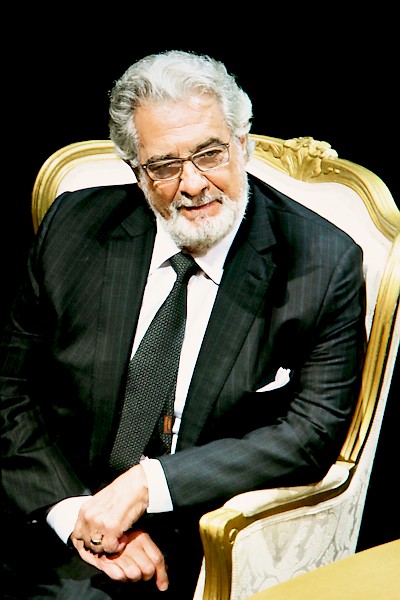


Comments
Marjolein Muller Massis 8 years ago
Round the 1600 century my family moved to Belgium and then to Holland. They came from a castle in a small village in Basque land named Massis and were pirates. A weapon , a stick with chain and a bol with spikes (old Basque name massis)
is still a part of our coat of arms. On the ruin in Basque land is still a Lauburus. I grew up with the story that the Lauburus meant Summer, Autumn, Winter and Spring and that it belongs to the Master of the Universe. Now I am living since one year in Merida. After reading the article I have a wonderful feeling of belonging. Thank you.
Reply
Unai 10 years ago
I’m a Basque living in the city of Campeche since 2003. I noticed lauburus at two houses from the northern area of Campeche State back in 2004. I readily noticed they were Basque, although I didn’t know if they identify their owners as Basque – which I was not able to establish - or if they are just ornamental motives that people repeat in their facades.
I have pictures of these two houses from 2004, which I will be glad to share with you. I just found the houses again at google maps:
Dzitbalche, Calle 20 x Calle 17 corner
https://www.google.com.mx/maps/@20.3155387,-90.0581861,3a,75y,312.66h,79.5t/data=!3m6!1e1!3m4!1sVRdh0RH_6Om_qUvuCm3mGA!2e0!7i13312!8i6656!6m1!1e1
Nunkini, Calle Morelos C-20 x Calle México C-19 (2 sides of the house:)
https://www.google.com.mx/maps/@20.4009704,-90.1488754,3a,75y,289.21h,91.96t/data=!3m6!1e1!3m4!1sBtAQj4kTuc0bW1OfGt13ew!2e0!7i13312!8i6656
https://www.google.com.mx/maps/@20.4010939,-90.1488342,3a,30y,228.41h,93.38t/data=!3m6!1e1!3m4!1slWCBo7Wk1eUyh2-9l3NvaQ!2e0!7i13312!8i6656
You may actually use the street view at google maps to look for more lauburus!!!
I was gladly surprised at your research. Now I see you resolved part of the mystery as you were able to link the lauburus found at Hacienda Uxmal with the origin of his owner, Don Lorenzo Evia.
Although the city of Campeche is full of colonial houses and Basque lastnames are not lacking here, I never saw any lauburu down here.
Reply
Viridiana Beytia 6 years ago
My grandfather was the nephew of Jose Gonzalez Beytia, he was a governor in Yucatan a few decades ago and as far as I know Beytias were based there. A branch of the family after moved to Campeche where i was born, there are a lot of Beytias specially in small town as you definitely noticed.
Im trying to trace back where did they came from, unfortunately theres not a lot of info on these basques.
This article is so helpful!
Reply
Elizabeth Hudson 10 years ago
Thank you for a,wonderful, well written article...as a history lover ... it was a treat to read!
Reply
Blas Uberuaga 10 years ago
In one of his books, Carl Sagan speculates that the lauburu and other variants of the swastika might have their origin in some celestial event, such as a comet breaking up, that would have been visible to much of the planet and thus inspire many cultures to devise such a symbol.
Reply
Suzanne Murphy-Larronde 9 years ago
What a treat to read Byron's unexpected and absorbing series on colonial Yucatan's Basque footprint. I so wish my mother, Juanita, was still among us so that we could take off together on a lauburu discovery quest. Many thanks to you, Byron and Rebecca, for your enterprising and entertaining scholarship.
Reply
(0 to 6 comments)